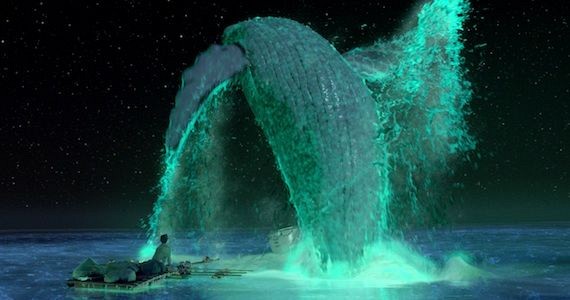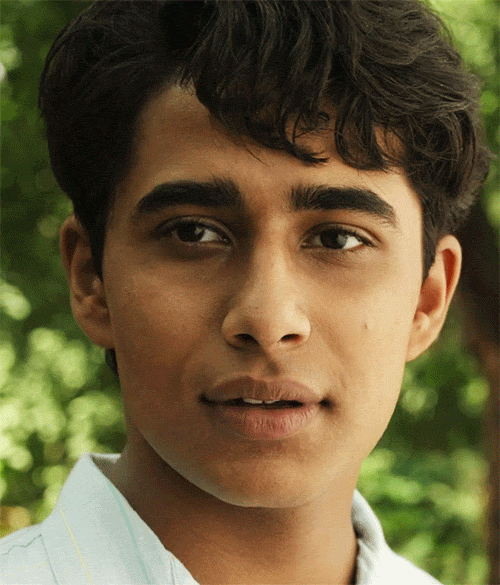
Aug
Diversity Without Pity #11 | Life of Pi
[responsivevoice_button voice=”UK English Female” buttontext=”Listen to Post”]
The last dog days of summer are winding down, and IDSL is going on vacation. This is part two of a series in DWP exploring the wanderlust, adventure, and self-discovery that travel affords.
The Oscar-winning Life of Pi, isn’t just a successful adaptation of a supposedly impossible-to-film book. The entire production of this work is, like the story of Piscine Molitor “Pi” Patel who survives over 200 days out at sea with a Bengal tiger, a modern miracle. I saw this movie years ago, and still can’t get it out of my mind. It’s so overtly visually lush, especially in the countryside of Munnar, I want to go to there. The DVD extras also reveal the backstory of pre-production, production, and post-production to get Life of Pi completed by its director Ang Lee.
Centering trauma on brown bodies
Rebecca Duncan’s essay, “Life of Pi as Postmodern Survivor Narrative” explains how themes of post-traumatic stress disorder (PTSD) expressed through a body of a particularly intellectually curious individual like Pi processes loss and recovery.
Pi must spend most of the movie reconciling the part of himself that is filled with so much rage, he doesn’t know what to do. The part that can be violent, ruthless, dangerous, savage. Whether Richard Parker was really there or not doesn’t matter. Either way, Pi knew that if he let Richard Parker die, he would’ve lost a part of his humanity.
A humanity that is beautifully crafted in the first act of Life of Pi. This is where we learn how Pi got his name, how his parents met, how they filled his imagination with vivid beauty, how they also taught him. About animals, how he came to several religions, his first love… If we’d started the story after the boat capsized, we would have no connection to what he has lost. He simply can’t be a vessel for our own pain. Because that’s another way of making a person of color one-dimensional. He has to come of age with his specific story intact.
But beyond that, this movie avoids doing what has been most common in Western literature and filmmaking that features Indians. The model minority myth. the Indian man as the sidekick. Emasculating the protagonist. Despite being written by white men, it avoids looking at Indian and Asian experiences through the white gaze.*
”Understand that Ang Lee wasn't interested in simply making a beautiful-looking movie. He was translating the vivid imagination of a young man who explored multiple religions, who went through trauma, starvation, and dehydration. There's purpose here.
Cinematography Helps Tell the Story
Ang Lee, who worked as first assistant director on Spike Lee’s Joe’s Bed-Stuy Barbershop: We Cut Heads, beautifully lights dark-skinned people. Lighting us is a special balance of light and exposure. Not enough and you can’t see us; too much and we look ashen. Look at how well-lit Pi is, played by actor Suraj Sharma.


I suspect this reflects Pi’s deep faith. He can imagine a near-impossible reflective sky in the middle of the ocean. He does all the intellectual things: reading survival manuals. But the effects of trauma, exhaustion, dehydration, and famine breed an imagination that helps him survive.
Understand that Ang Lee wasn’t interested in simply making a beautiful-looking movie. He was translating the vivid imagination of a young man who explored multiple religions, who went through trauma, starvation, and dehydration. There’s a purpose here.
Ang Lee and How to Manage the Creative Process
The DVD shows all the skills required to be an excellent manager: Bringing the entire production team together to pray, carefully selecting and grooming the lead. But he also never sacrificed his own culture and heritage in the process. As a Taiwanese American, he wanted to build the wavemaker in an Abandoned airport in Taiwan.
This also shows how it is not enough to hire someone based on racial representation or Another White Guy. You have to hire a director who has the experience, a range of abilities, and someone who can manage the creative process, with creative solutions. But you also have to extend your talent pool beyond the usual young white guys. Or else you end up with a Darren Aronofsky production shut-down in Australia, or a Josh Trank fiasco of The Fantastic Four.
- First-time actor Suraj Sharma went through extensive weight training, SCUBA diving, swimming and acting lessons to be in the movie. As director Ang Lee put it, “He isn’t the most disciplined kid in India.”
- This is Munnar, Kerala, India. I was in the middle of applying for a travel visa not knowing if I’d make it here.
- Pi and the Bengal tiger who protects Pi’s more sensitive self. A lesson in how rage and anger can also help one survive, if necessary.
And, again, in the wake of #OscarsSoWhite from the last couple of years, I want to present this movie as another example of how arguing for more people of color to be celebrated at the Academy Awards undermines itself by primarily bringing up examples of black performers or directors, or selectively memorizing our most recent past. By conflating “black people” with “people of color (PoC)” doesn’t really take into account other PoC’s experiences (and doesn’t allow us to dissect how the umbrella term “people of color” privileges different groups of color). And by only highlighting the past two years conveniently ignores just a few years prior (Ang Lee went on to win an Oscar as Best Director).

Being of fan of his since “The Ice Storm”, the movie buff in me was so relieved when he won. Now I know how he managed to execute Life of Pi, I want to be like him when I grow up.
Ang Lee not only plays to his strengths as a cinematographer. He uses the visual medium to justify why having a strong imagination is necessary to survive while keeping your humanity intact. What it means to center trauma on a brown body means. And when the director — a Taiwanese American — wins an Oscar. That is powerful.
Diversity Without Pity is a blog series from IDSL, highlighting media that uses smart design, and considers the diversity of it’s casting without selling the viewer or consumer, short. *But I got a strong side-eye to the line, “When the French handed back.” spoken by adult Pi (played by Irrfan Khan). That’s not how colonization works. No one just gets bored with a region and says, “Here you go, I’m done.” Someone fought to get it back.





